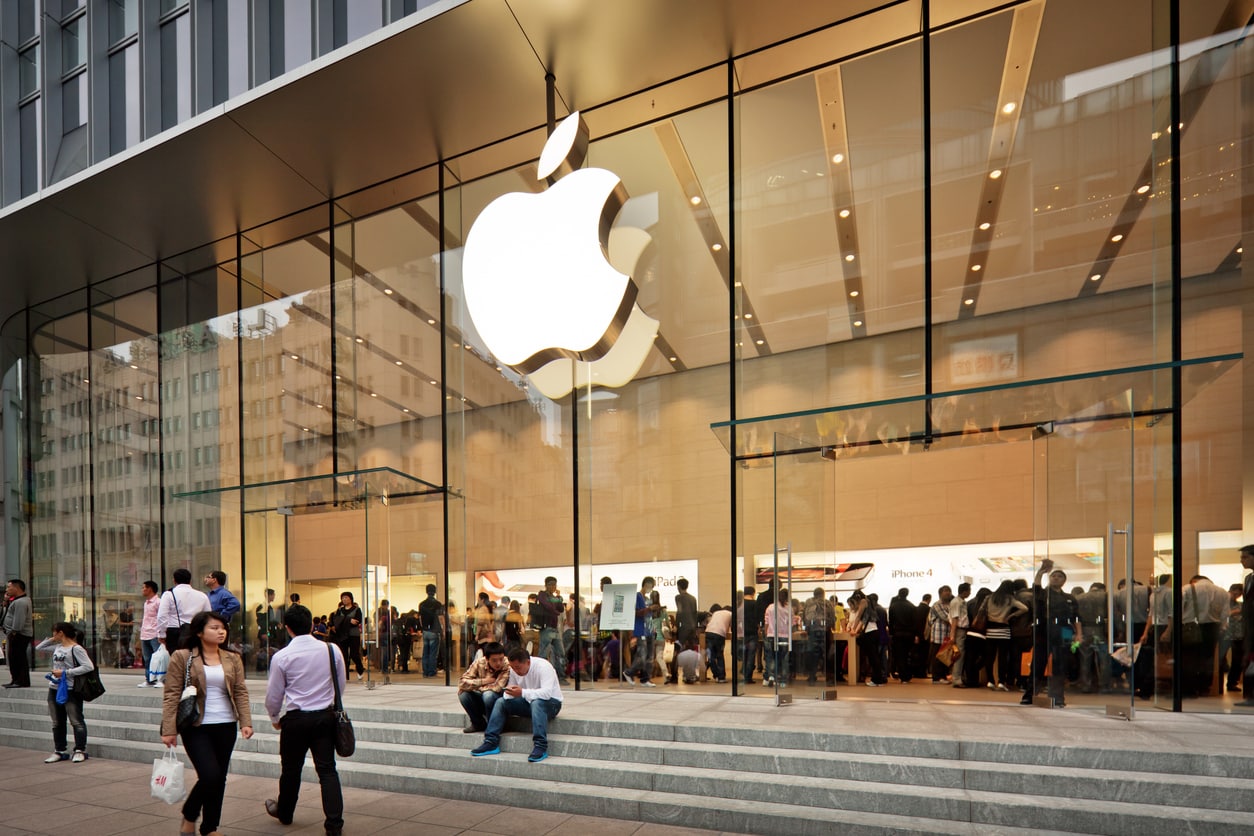Design is not just what it looks like and feels like. Design is how it works. – Steve Jobs
Professionals and organizations often confuse design thinking to be associated only with the designers who implement design ideas to develop branding elements. But clearly, design thinking is not just that. Some of the leading global brands have implemented design thinking into their processes to achieve great results. Companies such as Apple, P&G, PepsiCo, and SAP have outperformed the S&P 500 by a whopping 211%, all thanks to design thinking. On the other hand, some companies and professionals are still trying to get the hang of the concept of design thinking and how to apply it to their business problems. In this article, we will talk about how design thinking helps professionals to excel in their initiatives. Let’s start by understanding the concept.
What is Design Thinking?
Design thinking is a human-centric process where organizations and professionals observe problems from a different perspective by putting themselves in the customers’ shoes. It helps in identifying the problems and questions to solve, and the correct solutions to those problems. It is a process of bringing in innovation through:
– Understanding the specific needs of clients and identifying the burning pain points
– Outlining a problem statement to act upon
– Ideating and prototyping innovative solutions that cater to the problem identified
– Testing the solution for its underlying purpose
– Once tested successfully, applying the solution to solve the identified problem.
Now that we have a basic idea about what design thinking is, let us see how is it helping professionals to excel.
What are some of the design thinking benefits for professionals?
Design thinking can be applied to any industry
Let’s have a look at the companies which extensively use design thinking concepts at the core of their brand initiatives. Airbnb, Toshiba, Apple, IBM, Lego, Accenture, Marriott, Microsoft, Daimler, and many more organizations across industries are using design thinking to solve critical problems from a customer perspective.
Design thinking plays a vital role in the way these companies bring about innovation, make critical decisions, and remain global leaders in their respective industries. Design thinking concepts apply to all departments within organizations across industries, and hence it opens up a plethora of opportunities for professionals to move into design thinking environments.
Reinforcing Innovation
Design thinking helps professionals to come up with new and innovative solutions to the real problems of clients or customers. This helps in creating new opportunities for the company to have a competitive advantage. When a slowdown in innovation leads to a state of stagnation for the company, design thinkers can generate novel solutions to differentiate themselves from the competitors and open new doors to propel growth.
Case Study: How can design thinking reinvent a brand – P&G’s ‘Oil of Olay’
P&G struggled with its premium skincare brand in the 1990s which was then considered old-fashioned and irrelevant. They realized that only innovations could help them be a market leader in this segment and they chose to do it the ‘Design Thinking’ way. They had three strategic choices to go ahead:
- Launching another new brand
- Buying an established skincare leader
- Re-invent the Olay brand
User research, the first step of design thinking, helped them to infer some useful insights. The brand was well known in the market and had considerable potential. The existing customers, women over 50 years of age, were price-sensitive and minimally invested in skincare. Most of the competitors were focusing on this segment and opportunity for growth was scarce.
The conclusion: Use Olay’s brand name, and reinvent the brand through innovation.
Solution: Focus on ‘non-customers’ to innovate and reinvent the brand. P&G focused on the third set of non-customers as defined by ‘Blue-Ocean Strategy’, i.e., the unexplored non-customers who are in markets distant from others. It was observed that women in mid-thirties were using body lotions on their face. They were also using a day cream, night cream, facials and other traditional skincare methods. These are the women who noticed their first set of wrinkles and are vulnerable and anxious as compared to the older segment. They were worried about keeping their skin healthy and youthful. This set of women were more committed and ready to pay a premium price for proper skincare.
Without focusing on ‘wrinkles’ alone, P&G identified other needs of these mid-thirties women as dry skin, age spots, uneven skin tones, and appearance of skin. These were the new value propositions of a new product which was not being catered by any competitor. Hence, “Olay Total Effects” was launched in 1999 as a masstige (between mass and prestige segment) product, a result of true value innovation through design thinking.
[optin-monster-shortcode id=”squxepvugkce4cquclwn”]
Strengthening Leadership
Design thinking holds the power to transform failures into essential components of success by making small iterations to the solution. Leaders that pursue the design thinking approach for coming up with solutions to business-critical issues, reduce their chances of failure as the solutions are based on the insights drawn directly from the customer data and inputs.
Example: How Indra Nooyi turned Design Thinking into Strategy
At an interview by Harvard Business Review, Indra Nooyi was asked what problem was Indra Nooyi trying to solve by making PepsiCo more design-driven? She answered, “I visit a market every week to see what we look like on the shelves. The shelves just seem more and more cluttered, so I thought we had to rethink our innovation process and design experiences for our consumers—from conception to what’s on the shelf.”
The example of Pepsi Spire: Pepsi Spire is a touch screen fountain machine which facilitates a fundamentally different interaction with consumers. A gigantic iPad interacts with you as you try to make yourself a drink. When you add flavours, it shows beautiful shots of the flavours being added so that you experience that infusion of flavours and not just get a boring final output. The machine tracks what you buy, and the next time you swipe your card, it reminds you of the combinations you tried last time.
Talking about design failures, she says that PepsiCo follows a test, prove, launch approach in China and Japan markets. If you launch too quickly, you fail, but that’s ok in these smaller markets. In the U.S.A, the company is much cautious and follows many organized processes before launching a prototype.
Mountain Due Kickstart is a design hero for PepsiCo that has generated more than $200 million in just two years.
Encouraging Creativity
Design thinking initiatives require a creative mindset and active brainstorming for coming up with probable solutions to an identified problem statement. Thinking out of the box and tuning your thought process to explore unknown territories will help in coming up with innovative solution alternatives to the problem.
Case Study: GE Healthcare, From terrifying to terrific – making MRIs less scary and more fun for young patients
Kids had a tough time while going through an MRI scan. The anxiety curve for kids and their parents starts with finding out that the kid needs a scan. The anxiety amplifies until the time they reach the hospital, already upset by the time they see the scanner. The dim lights, dull paints, the sound that the machine makes, the fact that the kid is alone in the machine, and the general hospital vibe add to the gloomy and scary experience.
The answer was to provide a welcoming environment so that the kids would feel getting scanned as an adventure and not a trial. The pilot rooms were showcased at the University of Pittsburgh hospital and received an incredible response. There were various themes and adventures including aromatherapy, calming decorations, even disco ball bubbles. In such setups, the commands to get the scan done are a part of the adventure. An example of an adventure series installed was that children have to get into a canoe and hold the boat still so that it doesn’t rock. If the child holds still, the fish will start to jump over them.

Promoting team-work
Design thinking spreads its wings across multiple domains in an organization. A design thinking project needs an array of professionals with varying skill sets to come together and form a team to ensure project success. Such teams propose different perspectives and ideas to finally choose the best way forward after carefully evaluating each idea. This collaborative force is the true essence of design thinking.
Case Study: How we design in the UberEATS team
UberEATS design thinking team sets a classic example of teamwork and team initiatives being at the core of design thinking program. The designers on the team love food culture, logistical challenges, and the other demands of a fast-growing startup. These are the areas where the design thinking team at UberEATS puts in most of their efforts.
The approach that the team takes is to move out of their offices and immerse themselves in the markets where their customers dwell. They move about the cities to understand the food culture there and watch how customers are using their designs.
The products being new and complex, need to be tested and iterated real-time. In this kind of a design environment, speed is crucial to get the required results in the desired time. The teams identify opportunities through their immersion initiatives and improve the design as quickly as possible.
Ultimately, Delivering Business Value
All functions in a design-led company have a common point of focus and that is the customer. Design thinking involves small cross-functional teams with shared incentives while maintaining constant customer interaction.
Design-led companies also use qualitative and quantitative research for effective product development and understanding customers’ exact requirements, using different techniques such as social media scraping, organizing focus groups, warranty data analysis, and ethnographic research among others. Continuously listening to the client/ customer even long after the initial conceptualization phase and improving customer experiences post-launch helps to improve business value in the longer run. Many other best practices that fall under the umbrella of design thinking are aimed directly at helping the business provide stellar value to the customers and differentiate from the competition.
The importance of design thinking is only increasing. It is becoming more and more relevant in a time where customers have achieved global access to products and services and have developed a high benchmark in terms of customer service. The thin line between the physical and digital experiences is fading and this makes it difficult for organizations to stand out from the crowd. Applying design thinking to your business problems will help you rise above the competition. Now is the right time to harness the power of design thinking.
For those interested in Design Thinking, top international business schools are offering courses that aim at equipping future business strategists with the knowledge that help brands prioritise user experience. You can enroll for Design Thinking courses to upskill. Check out the design thinking course curriculum for a better understanding of the course formats.






